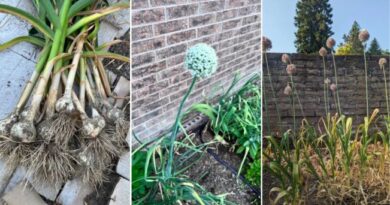12 Simple and Budget-Friendly Gardening Tips Using Burlap
Gardening doesn’t have to be an expensive or complicated endeavor, especially when you use versatile materials like burlap. Burlap is not only eco-friendly and biodegradable but also incredibly practical for a variety of gardening tasks. Its natural appearance adds an organic touch to your garden, and it’s surprisingly affordable.
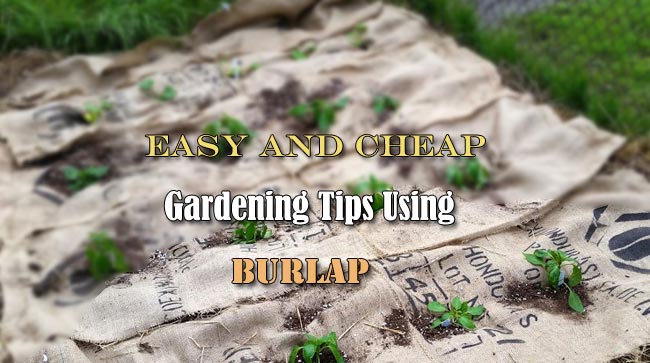
Whether you’re looking to protect your plants from the elements, enhance your garden design, or find a cost-effective solution for common gardening needs, burlap can be the answer. In this article, we’ve compiled over 12 simple and cost-effective burlap gardening hacks that can make your gardening experience more efficient and enjoyable.
1. Create a Burlap Planting Bag for Garden Fence Décor
Introduction: One of the easiest and most creative uses for burlap is turning it into a planting bag. This method adds charm to your garden while keeping your plants protected and thriving. By sewing burlap into the shape of a bag, you can create a stylish and functional planter that will enhance the look of your garden fence.
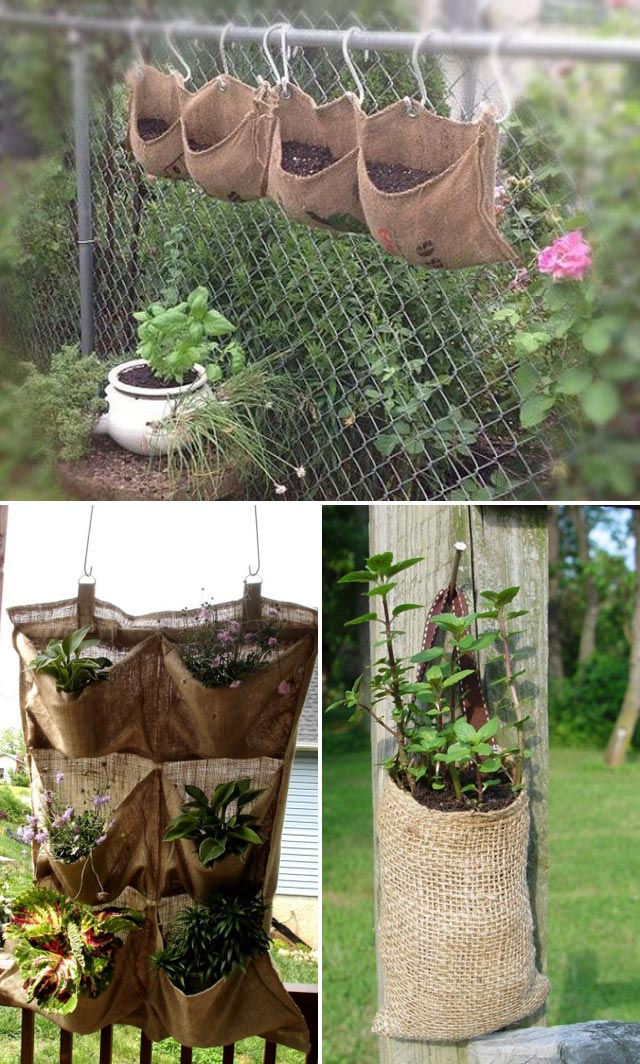
How-To: Simply sew a rectangular piece of burlap into a bag shape and fill it with nutrient-rich soil. Then, plant your favorite flowers, herbs, or climbing plants.
You can hang or attach the bag along your garden fence, creating a vertical garden that is both space-saving and eye-catching.
2. Use Burlap to Shade Plants from the Summer Sun
Introduction: During the summer, some plants—especially delicate greens—can struggle under the intense heat and direct sunlight. Burlap can act as a natural, breathable sunshade that protects your plants from sunburn without suffocating them.
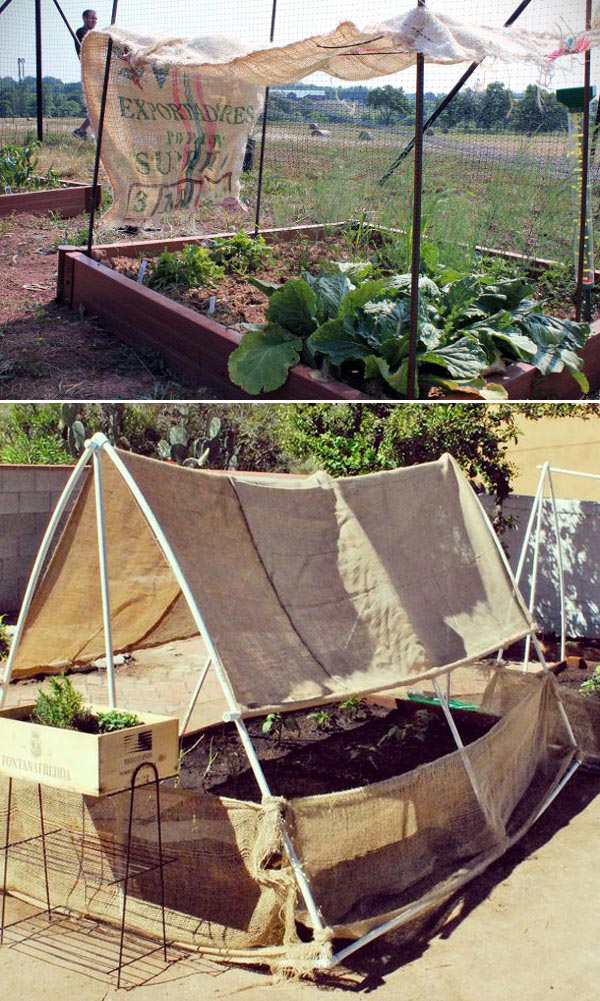
How-To: Cut a length of burlap and drape it over a simple wooden or PVC frame. This will create a shaded area for your salad greens, herbs, or any plants sensitive to the sun.
The burlap will let in just enough light while shielding your plants from the harsh midday sun.
3. Build Burlap Barricades to Safeguard Fruit Trees and Bushes from Winter Wildlife
Introduction: In colder climates, winter can bring hungry wildlife into your garden, where deer and rabbits often feast on fruit trees and bushes. Burlap can be a great deterrent, providing a low-cost and eco-friendly way to protect your plants.
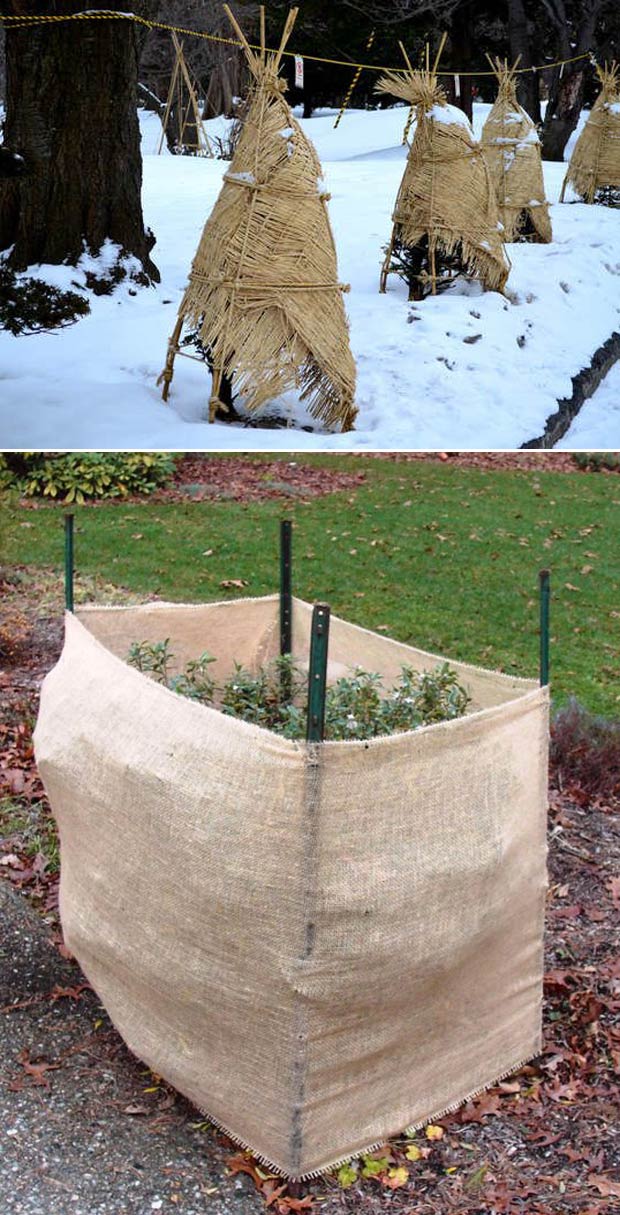
How-To: Use burlap to build simple barricades around your fruit trees or bushes. Wrap the burlap around the trunks and stems, securing it with garden twine.
This barrier not only protects plants from being eaten but also helps keep them insulated during winter’s chill.
4. Hanging Baskets with Burlap Liners: A Budget-Friendly Alternative
Introduction: Pre-formed coir liners can be costly, but burlap offers an excellent and inexpensive alternative for hanging baskets. This budget-friendly solution also has the added benefit of better water retention.
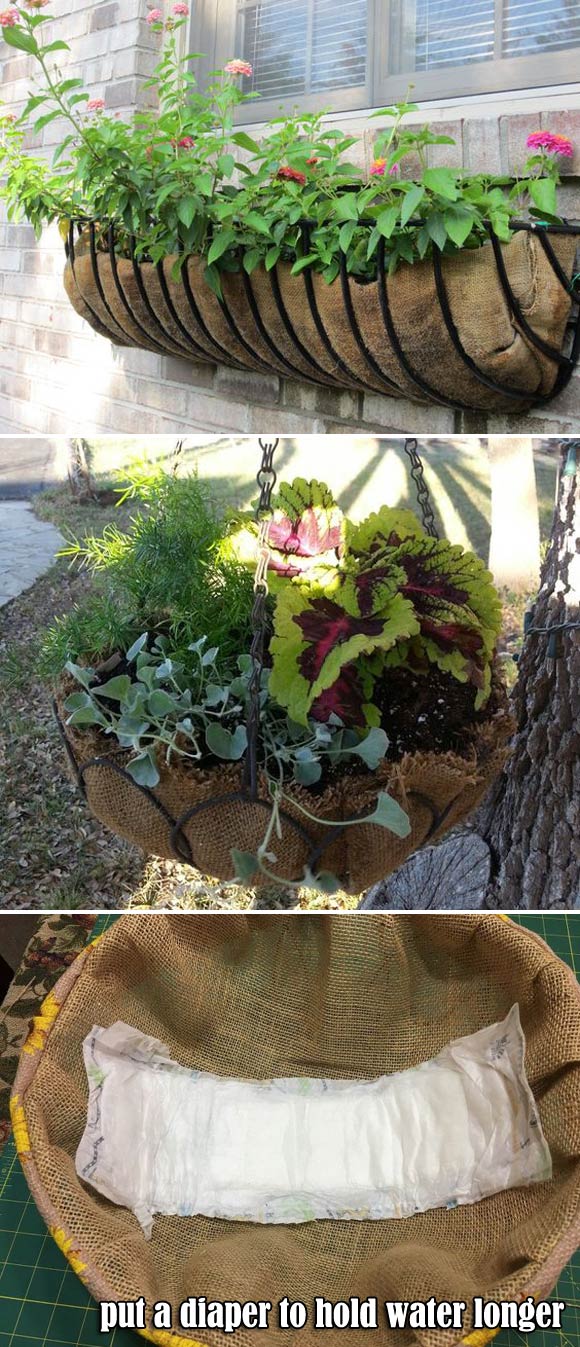
How-To: Line your hanging baskets with burlap, ensuring the fabric is snug and secure. The burlap will hold soil while allowing excess water to drain. See the tutorial: hometalk.com
Plus, it acts like a natural “diaper” to retain moisture longer, keeping your plants hydrated and healthy.
5. Burlap Screens to Protect Plants from Cold Winds
Introduction: Cold winds can severely damage young or tender plants by drying them out or freezing them. Burlap screens provide a low-cost, effective barrier against harsh winter winds, allowing your plants to grow in more stable conditions.
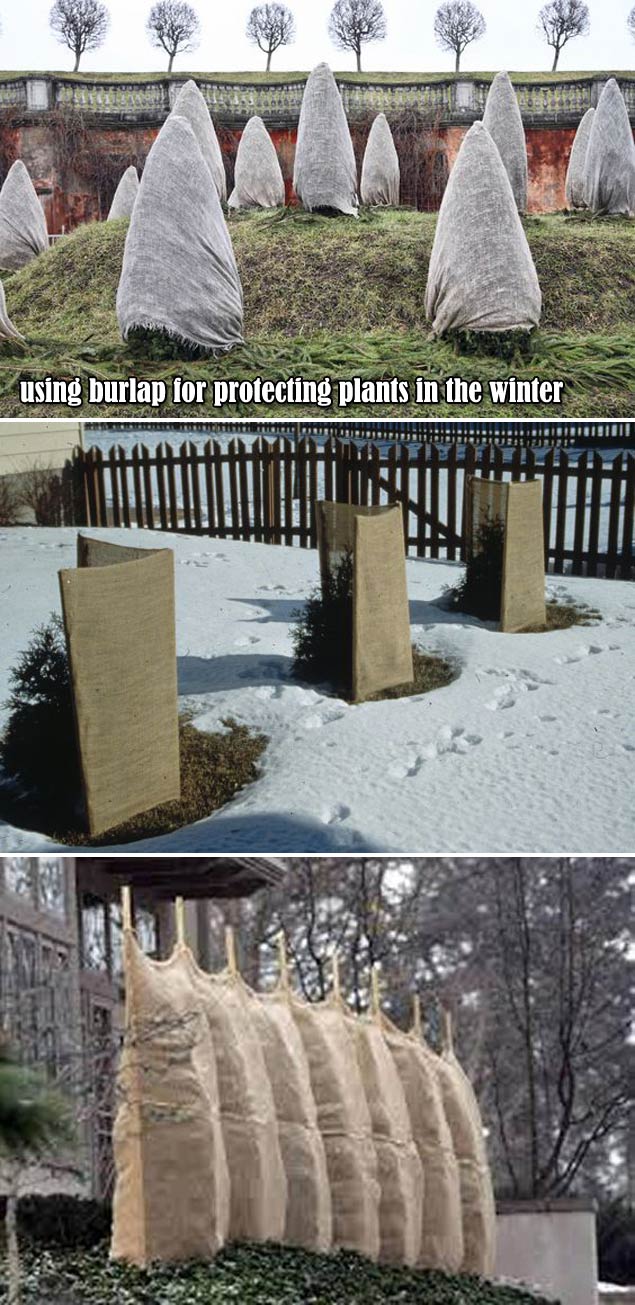
How-To: Set up a support structure using wooden stakes or PVC pipes and drape burlap across the framework.
This creates a windbreak that shields your plants from drying winds. You can also use this method to protect plants from the damaging effects of frost during the colder months.
6. Upcycle Burlap for Charming and Affordable Planting Pots
Introduction: If you’re on a budget but still want stylish pots for your plants, burlap is your answer. It’s an easy way to dress up unattractive or plain containers and give them a rustic, farmhouse look.
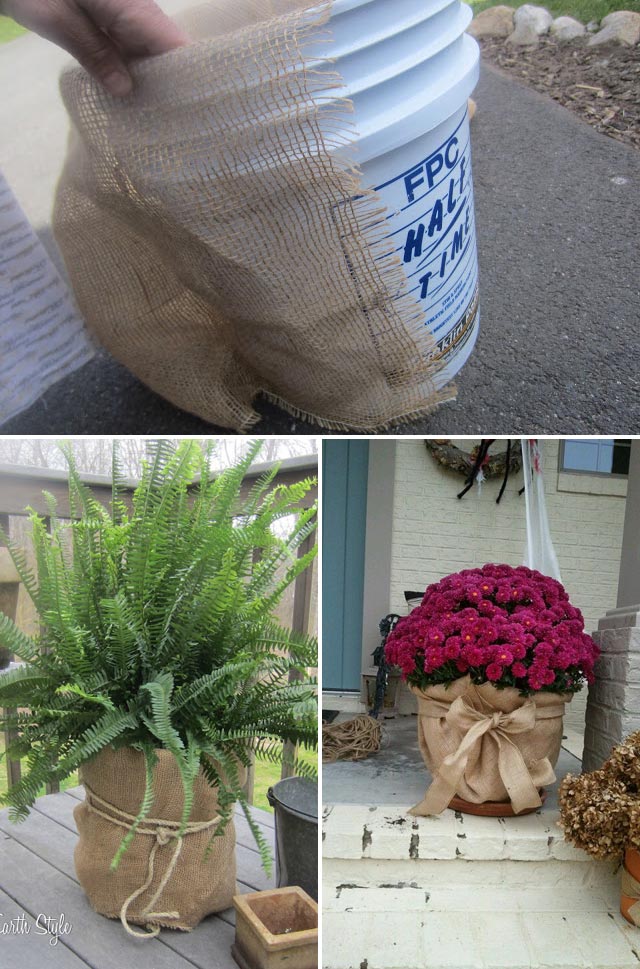
How-To: Wrap old, unsightly plant pots with burlap to add texture and character. Secure the burlap with twine or a hot glue gun for a clean finish.
These upcycled pots can be used for a variety of plants, from flowers to herbs, giving your garden a charming and budget-friendly makeover.
7. Protect Plant Roots During Transplanting with Burlap Sacks
Introduction: Transplanting can be stressful for plants, particularly when it comes to protecting their roots. Burlap sacks offer an easy, practical solution to make the process smoother and more successful.
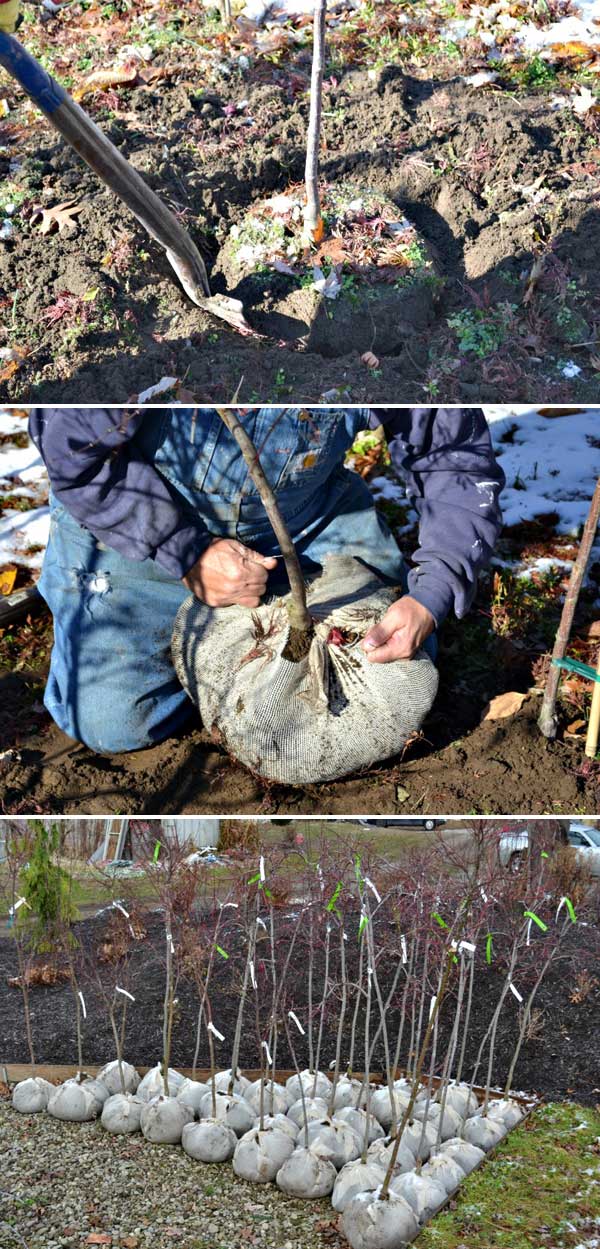
How-To: When transplanting, wrap the plant’s root ball in a burlap sack to keep the roots intact and protected.
This makes moving the plant much easier and minimizes the shock from root exposure. Once the plant is in its new location, simply remove the burlap. See the full instructions here: mikesbackyardnursery.com
8. Cover Tender Crops with Burlap to Protect from Frost
Introduction: Late-season frost can be detrimental to tender crops like tomatoes, peppers, and zucchini. Burlap is an affordable way to provide a protective layer over your plants during chilly nights.
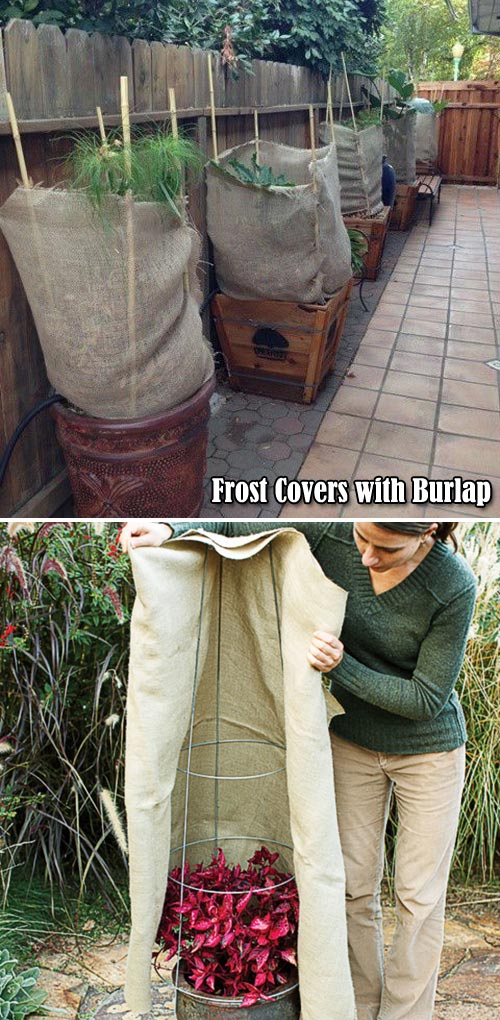
How-To: Drape a piece of burlap over your crops before nighttime temperatures drop.
The burlap will act as an insulating blanket, trapping warmth while allowing air to circulate. This simple method can help extend your growing season by protecting your crops from frost damage.
Tips: The next morning, after temperatures have begun to rise, remove the cover.
9. Use Burlap as a Weed Barrier for Unplanted Garden Beds
Introduction: Weeds can quickly take over garden beds, especially in new plots that haven’t been planted yet. Instead of using plastic or other materials, burlap is an organic and biodegradable option to keep weeds at bay.
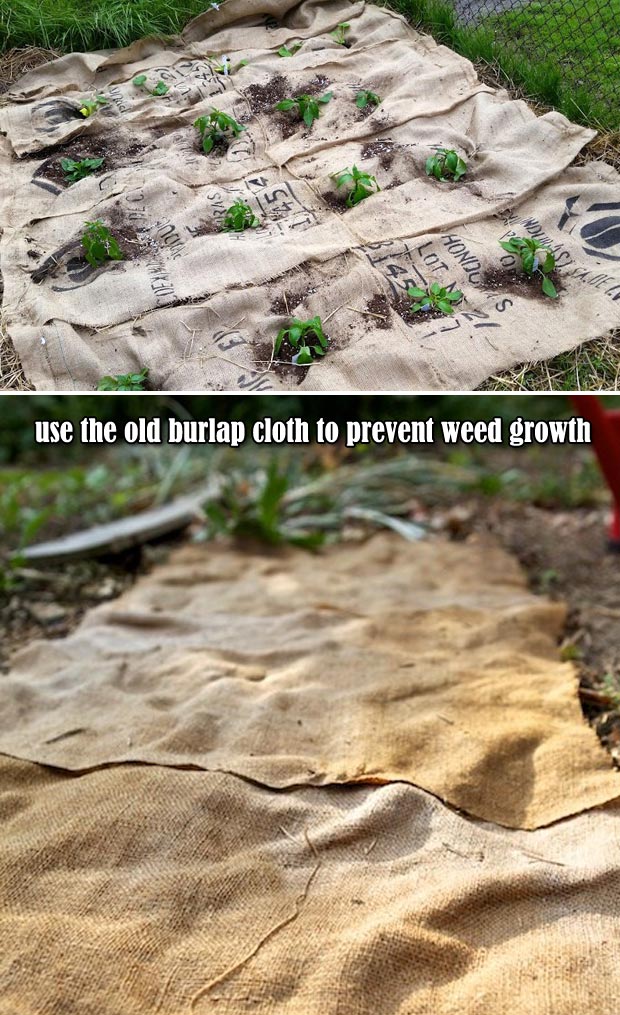
How-To: Lay down burlap over the prepared soil of your garden bed.
It will block sunlight, preventing weed seeds from germinating, while allowing air and water to reach the soil beneath. Once you’re ready to plant, simply remove the burlap. See the instructions: week99er.com and chiotsrun.com
10. Block Drain Holes in Planters with Burlap
Introduction: While good drainage is essential for plant health, sometimes you need to control the water flow more precisely. Burlap is a simple, effective material to block drain holes in planters while still allowing excess water to escape.
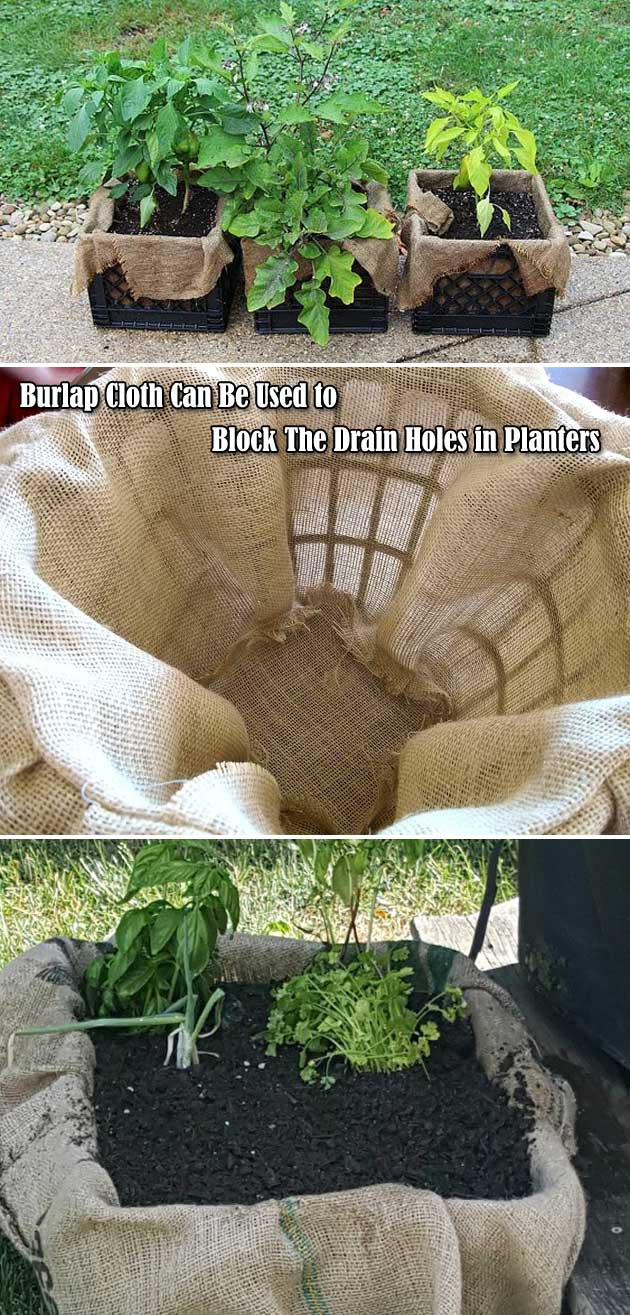
How-To: Place a piece of burlap over the drain hole of your planter before adding soil.
The fabric will prevent the soil from washing out while still permitting drainage, preventing root rot and ensuring your plants receive the perfect amount of water.
11. Turn Old Burlap Sacks into Planters for Vegetables and Herbs
Introduction: Burlap sacks make great containers for growing a variety of vegetables and herbs, especially if you’re working with limited space or need an inexpensive gardening solution.
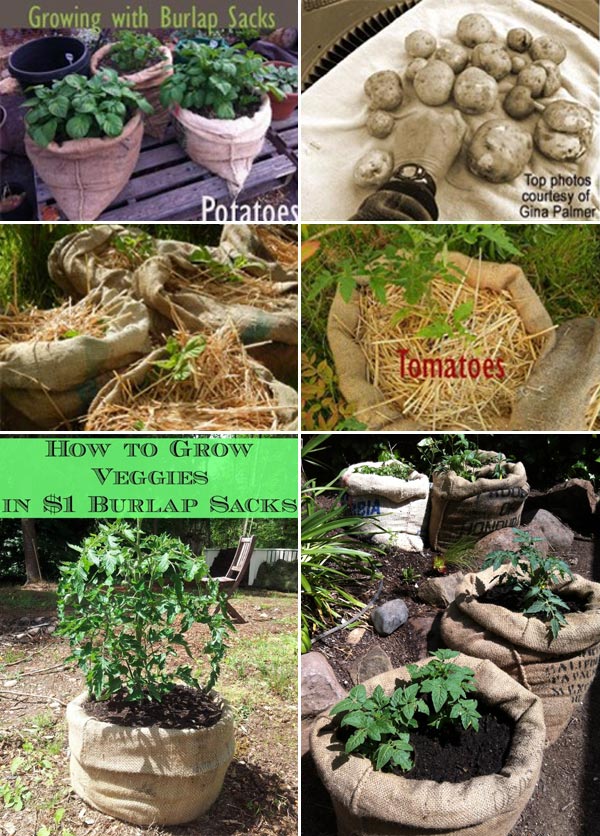
How-To: Use burlap sacks to plant vegetables such as tomatoes, peppers, potatoes, and herbs.
Simply fill the sack with soil, plant your crops, and keep the sack in a sunny spot. As the plants grow, the burlap sack expands, providing ample room for their roots.
12. Create a DIY Burlap Garden Box Using Cardboard
Introduction: For a portable and temporary garden bed, a burlap garden box can be made easily with just a cardboard box and burlap sacks. This setup is great for small-space gardening or for experimenting with container gardening.
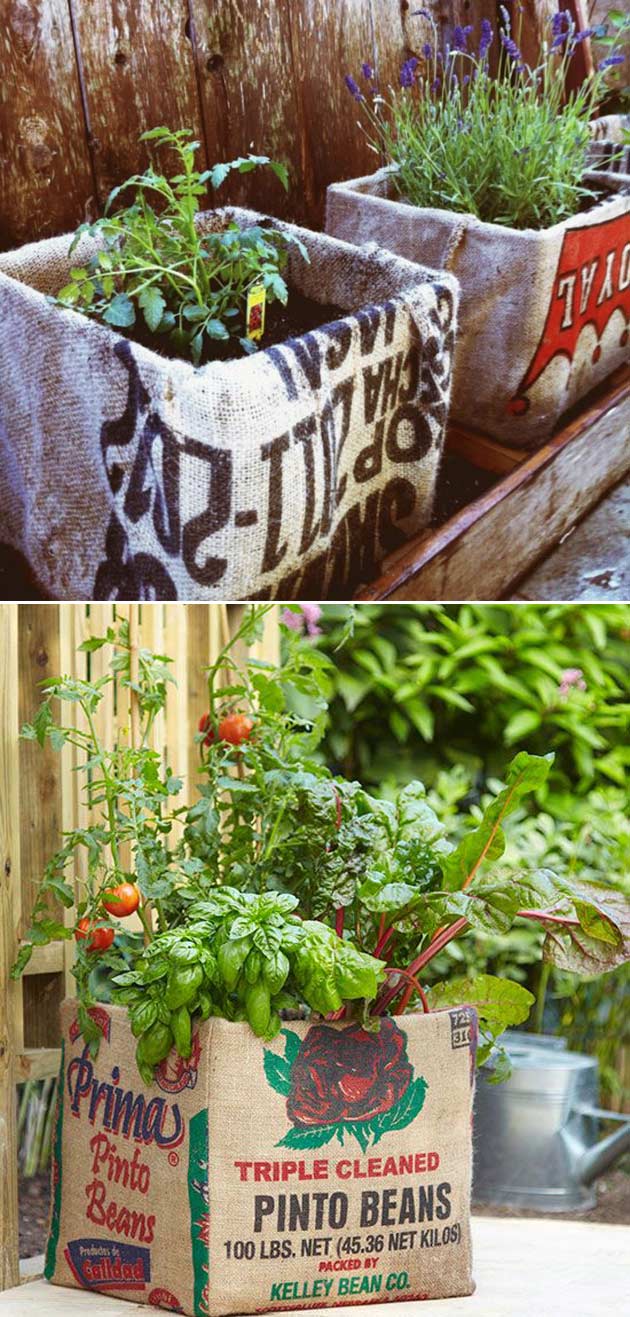
How-To: Cut a cardboard box to the desired size and line the inside with burlap. Fill it with soil and plant your chosen crops.
The burlap allows for good drainage while maintaining a sturdy structure for the plants to grow in. This method is perfect for creating an instant garden in a small area or on a balcony.

